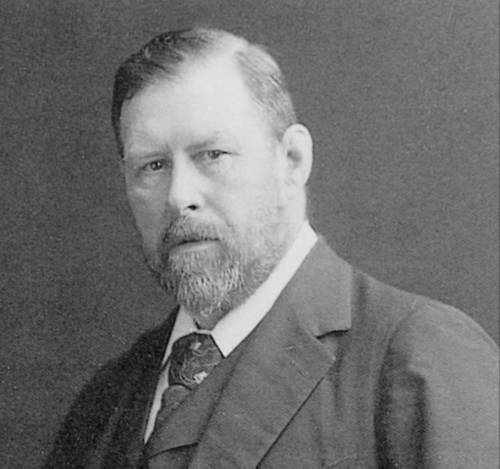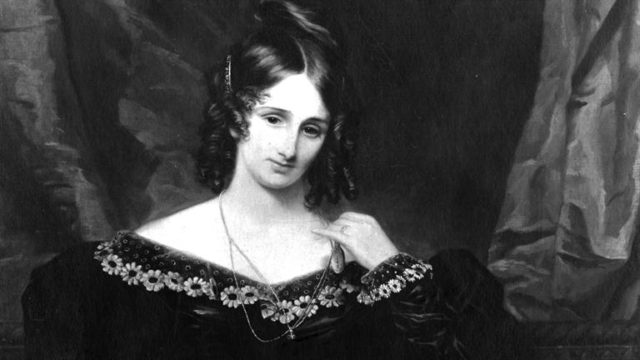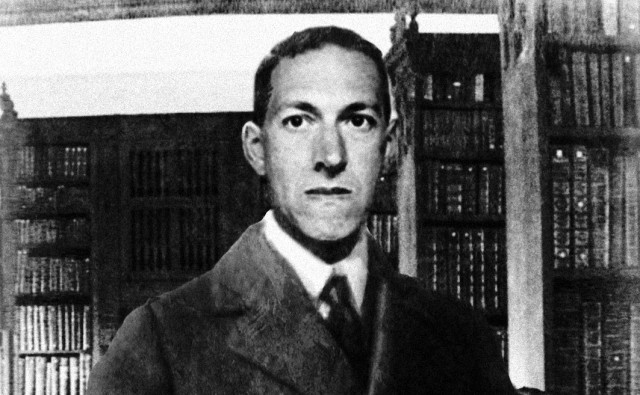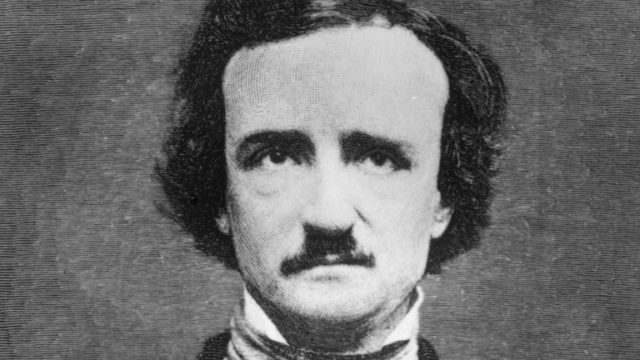Horror writers are surrounded by mystique—fans tend to view their favorites as dark, troubled or just plain weird people whose brains take them to strange places the rest of us could never dream of.
But on some level we know that they’re regular people with bills, chores and hobbies just like the rest of us. And, like most creators, they don’t like to limit themselves to a single genre. These writers and directors are beloved for their ability to scare us, but they’ve also created some shockingly un-scary work.
10. Wes Craven
Wes Craven’s name is practically synonymous with slasher flicks. In addition to creating A Nightmare on Elm Street and Scream, Craven is responsible for The Hills Have Eyes, The Last House on the Left and many others. If you’ve seen a terrible horror remake in the past decade, odds are it was based on something by Craven. His whole career seems intended to make his last name ironic.
But in 1999 Craven took his only detour from scaring and thrilling with Music of the Heart, a movie you can tell is going to be sappy just from the title. The man responsible for the death of God knows how many fictional teenagers decided to tell a story where the only slashing being done was across violin strings.
Based on a documentary, Music of the Heart is a drama about an East Harlem music school. If you guessed that a new teacher who initially feels out of her league eventually wins her students over with unorthodox teaching methods just in time to bring everyone together for a school saving fundraiser while also learning a little something about herself, well, you’d be right. The film opened to mixed reviews and lost a significant amount of money, although Meryl Streep’s leading performance earned her one of the film’s two Oscar nominations, the only in Craven’s career. Unconcerned with such trinkets, Craven went back to knocking off innocent victims at a staggering pace.
9. John Carpenter
If Wes Craven is the master of slashers, Carpenter has the market on sci-fi horror covered. The Fog, The Thing, They Live and others are all huge cult hits, and he’s also delved into more traditional horror and action with Halloween, Assault on Precinct 13 and Big Trouble in Little China. His lengthy, sprawling career has been massively influential.
Often forgotten amidst all his gory special effect laden films is the romantic sci-fi movie Starman, starring Jeff Bridges as an alien who comes to Earth and falls in love with Karen Allen after he takes the form of her dead husband and forces her at gunpoint to take him across the country. Uh, it’s more romantic than it sounds.
Starman was both a critical and commercial success (rare for a Carpenter film) and Bridges received an academy award nomination. But it remains Carpenter’s only foray into the world of romance, not counting the fact that everyone has a crush on Snake Plissken.
8. Clive Barker
We suspect Clive Barker is one of those people who would drop dead if he stopped creating. He’s written novels and comic books, he’s written and directed films, he’s voiced and helped develop video games based on his work, he’s sketched and painted—name a medium and Barker has done something scary in it. He’s most famous for his Books of Blood story collections, which catapulted him to fame, and the Hellraiser films, which ensured that he stayed in the spotlight.
But one medium Barker isn’t associated with is plays, which he wrote nearly 30 of before becoming famous. Some are definitely still horror stories, but others are surreal comedies that feature romantic farce, mysterious conspirators, and a time traveling Queen Elizabeth. You can see hints of his horror themes, but the tone is wildly different than what you’d expect from his work. Others are even further out there—Colossus, for example, is a drama about Goya. Admittedly, we haven’t read it, so it’s perfectly possible that a monster pops up and eats Goya at the end.
7. Bram Stoker
Bram Stoker is the literary equivalent of a one hit wonder, although we suppose it’s inevitable that when you write one of the most influential novels in history your other work will get overlooked. So, what else did the man who gave us an iconic vampire write? A werewolf novel? A serial killer thriller? Dracula II: Back for Blood?
Oh, Stoker wrote about evil alright… the evil of alcohol. His first novel, The Primrose Path, is about an Irish carpenter who moves to London in search of a better life but only encounters a parade of misfortune, which drives him to drink. This in turn leads him to—spoiler alert for an 1875 novel you’ve probably never heard of and will almost certainly never read—commit a murder-suicide after he falsely accuses his wife of having an affair. Man, vampires have nothing on booze.
Stoker did write other horror stories, but a surprising amount of his work deals with more everyday scenarios. The uncreatively named The Man and the too creatively named The Watter’s Mou’ are both bodice ripping tales of romance, and Snowbound: The Record of a Theatrical Touring Party is influenced by Stoker’s own time with a theater company. Basically, Dracula was the exception to Stoker’s literary output, not the rule. While it’s not surprising that his Victorian romances have faded into obscurity, we’d love to see The Primrose Path be given the Twilight treatment.
6. Mary Shelley
The creator of Frankenstein (which, as a friendly reminder, is the name of the doctor and not the monster) also primarily wrote more conventional novels. Valperga was a historical epic about war in Italy, The Fortunes of Perkin Warbeck is a dramatization of the life of a real pretender to the English throne, and her last two novels, Lodore and Falkner, look at the social and familial role of women (although you could argue that, like in Frankenstein, it turns out that the real monster is man).
But arguably her most memorable non-monstery work is Rambles in Germany and Italy, the last book published in her lifetime. Much more than just a travelogue (although it serves that function well too), Rambles features insightful political commentary from an era when women were discouraged from discussing the subject. It’s also a very personal work—she touches on depression, the death of her husband and two of her children, memories of her youth, and more.
Even its publication history is fascinating—the book was published to raise money for Italian political revolutionaries that the liberal Shelley sympathized with, but they ended up deciding that it would be more profitable to attempt to blackmail her. Rambles serves as a reminder that Shelley was a complicated woman who did much more in her lifetime than create a Halloween costume for people too lazy to come up with something more creative.
5. Dean Koontz
Dean Koontz, the first choice of travelers when airport bookstores don’t have anything by Stephen King they haven’t read, has sold over 450 million books. That’s such a staggering and impressive number that we don’t even feel bad about making fun of him, because he’s sitting on a throne of royalty checks so high he can’t even see us.
Koontz, like King, is associated with horror and suspense. But let’s read the description of his very first novel, Star Quest.
“In a universe that had been ravaged by a thousand years of interplanetary warfare between the star-shattering Romaghins and the equally voracious Setessins, there seemed now but one thing that might bring the destruction to an end. That would be the right catalyst in the hands of the right people. The right catalyst could well be the individualist rebel, Tohm… he who had once been a simple peasant and who had been forcibly changed into a fearfully armored instrument of mechanical warfare—the man-tank Jumbo Ten. But the right people? Could they possibly be the hated driftwood of biological warfare—those monsters of a cosmic no-man’s land—the Muties?”
Oh, man. That’s right, before Koontz became a horror icon he was writing pulp sci-fi that makes your Star Wars fanfiction look sophisticated. Check out the rad cover:
Aryan Spaceman looks annoyed that the cross-eyed harpy-woman is into him. But he’s got bigger problems, like the giant eyeless face that’s sneaking up behind them.
Again, we don’t want to be mean to Koontz. He wrote Star Quest when he was 23, an age when most of us could barely string two sentences together. It’s just an adorable reminder that even the most successful authors start from humble origins.
4. R.L. Stine
R.L. Stine has written roughly 18 million horror stories for children. If you’re a millennial and you didn’t read Goosebumps as a kid it’s distinctly possible that you didn’t know how to read. He’s had so many different series targeted at so many different age groups that listing them would double the length of this article. He’s even written a couple of (not very good) books for adults. But regardless of what series you’re talking about, Stine is inevitably associated with horror.
That’s why it’s a surprise to learn that Stine wrote, say, Siege of Serpentor, an awesomely named G.I. Joe adaptation. We haven’t read it, but we’re guessing there’s at least one scene where a Joe think he’s been shot, only for you to turn the page and discover that it was all a dream. He also wrote Golden Girl and the Vanishing Unicorn, a choose your own adventure story that’s only scary if you have an oddly specific fear of horned animals.
But most incongruous with Stine’s reputation is Jovial Bob Stine’s series of joke books, and the fact that he describes himself as jovial should tell you exactly what you’re getting into. Gags from Jovial Bob’s Computer Joke Book, 101 Silly Monster Jokes and others are more likely to induce a different kind of horror than laughs. “Where’s a monster’s favourite place to swim?” the book asks. “Lake Eerie,” it answers, to crickets and tumbleweeds. Jokes that are a “howwwwl!” indeed.
But credit where credit’s due—Stine actually got his writing career started with a teenage humor magazine, and humor has always played a role in his success. We’re guessing there’s a reason he’s mostly remembered for the horror, though.
3. George A. Romero
Romero is associated with one thing and one thing only—zombies. Night of the Living Dead, Dawn of the Dead, other movies with Dead in the title… these are the reasons Romero is revered by horror fans. Oh sure, he’s explored other avenues in the genre, too—a biological outbreak in The Crazies, vampires in the under-appreciated Martin, that weird Monkey Shines flick featuring a crazy helper ape… you know, standard horror tropes. But Romero will always be remembered first and foremost for unleashing the zombie craze upon the world. We’re not sure whether to thank him or not.
With that in mind, can you guess what Romero followed up the seminal Night of the Living Dead with? If you named the romantic comedy There’s Always Vanilla, you either cheated or you’d wipe the floor with us at pub trivia night.
This tale of a soldier turned drifter is generally considered to be Romero’s worst film, including by Romero himself—he blames the “total mess” on a lack of money. Still, the very fact that it exists is fascinating. And for a romance flick it does have some of that Romero darkness, considering the protagonist ends up moving back home with his father, who encourages him to live a boring life, while his ex-girlfriend raises their child with another man. Comedy!
2. H.P. Lovecraft
H.P. Lovecraft died penniless and unknown, but is today regarded as the grandfather of modern horror. The Internet in particular has been responsible for a Lovecraft renaissance—his most famous creation, Cthulhu, is a nerd household name. His short stories have inspired books, movies, video games and more, all thanks to a fresh take on horror that emphasized existential dread over mere monsters.
But scary short stories weren’t all Lovecraft wrote. Despite his new-found popularity, his extensive collection of poetry remains obscure. Most of his poetry is quite good—he covers horror, satire and surprisingly mundane, everyday topics. Then there are his patriotic poems, which have aged… less well.
Lovecraft was a staunch Anglophile, and wrote odes to England like “The Rose of England” and “An American to Mother England” that are at best sappier than a teenager’s love letters and at worst xenophobic, with references to England as a “World-Conquering Mother” who tamed savage lands. “World-Conquering” generally isn’t seen as a positive description, unless you’re playing Risk.
When World War I started Lovecraft was naturally a staunch supporter of American interventionism. He did all he could to beat the drums of war with poems like the jingoistic “Ode for July Fourth,” the sarcastic “Peace Advocate” and “Pacifist War Song,” which was basically a flowery way of calling the war’s opponents sissy girls. Kind of a childish insult from a man who invented cosmic horrors. But at least his zealous warmongering poetry was better than his poetry on race—let’s just say that “On the Creation of Niggers” didn’t win any praise from the NAACP.
1. Edgar Allen Poe
Like Lovecraft, Poe is synonymous with horror—who didn’t have to read “The Tell-Tale Heart” in school? Many of you will also know that Poe is credited with inventing the detective genre. In fact, he revolutionized American literature in a number of ways, and was rewarded with poverty and misery. At least someone toasts his grave every year.
What’s often forgotten is that Poe also wrote humor, and his sense of what tickled funny bones was strange, to put it mildly. Some of his humor took the form of elaborate hoaxes—he managed to fool the public six times over his lifespan. The Balloon-Hoax, published in the conservative and serious New York Sun, announced that a European man had successfully traversed the Atlantic Ocean via hot air balloon in the span of three days. Written to sound as plausible as possible, the story proved so popular that Poe described the Sun’s building as “literally besieged,” and he failed to get a copy of the paper for himself despite trying all day.
Basically, one of the most influential authors in American history had the same sense of journalistic ethics as the yahoos behind the Balloon Boy hoax. In another prank, Poe penned the journal of explorer Julius Rodman, the “discovery” of which revealed that Rodman was the first European to cross the Rocky Mountains. Even a Senator wrote about the amazing revelation in an official document. Insert your own political joke here.
Other Articles you Might Like





2 Comments
No Stephen King. I thought we wrote Shawshank Redemption?
No Stephen King or Anne Rice? Wow.